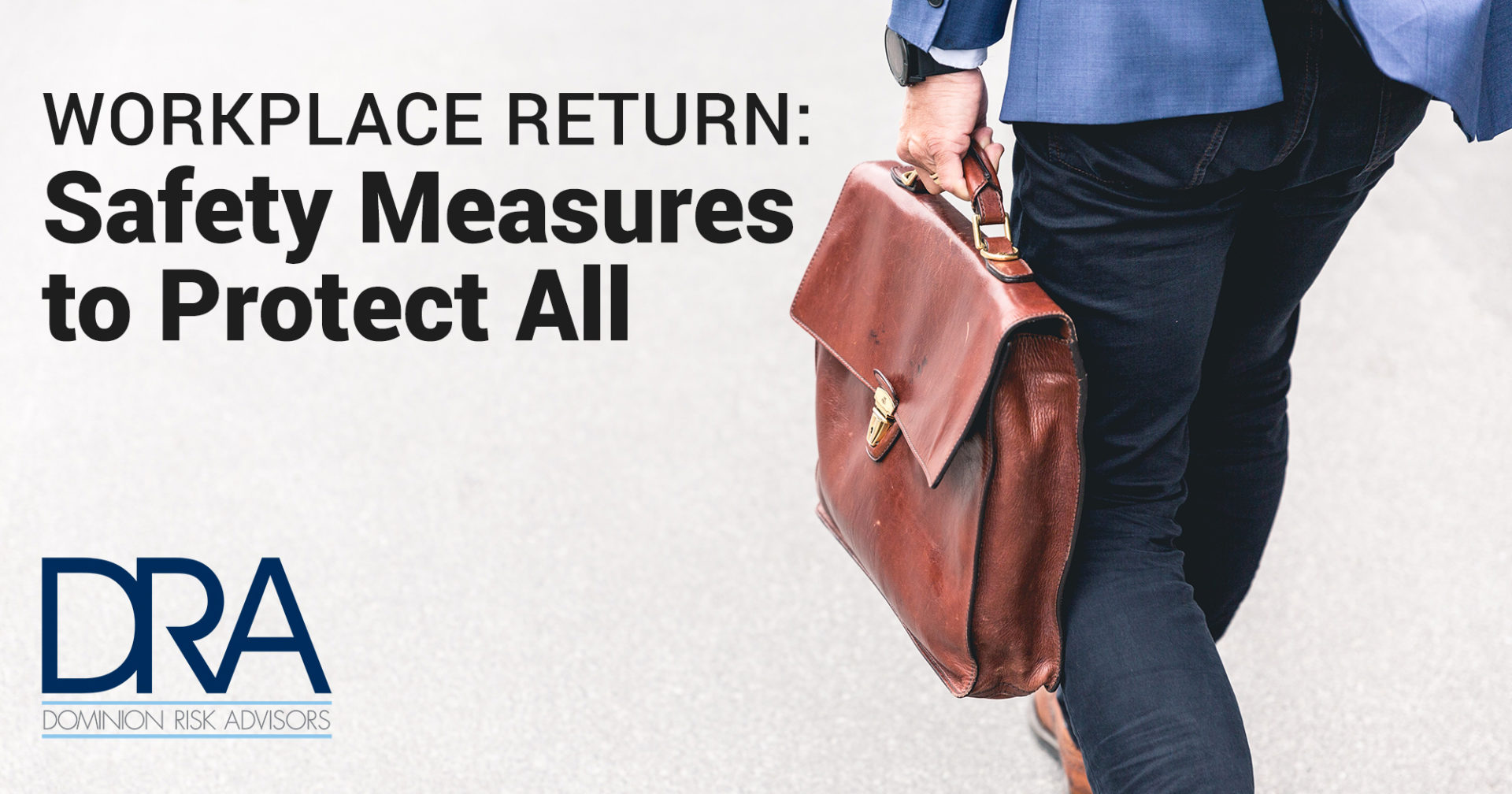Those businesses that are reopening following our Covid-19 shutdown are likely to feel very different. We encourage you to plan accordingly to ensure a smooth, safe transition. The health of your employees, your customers and your suppliers are the priority of this outline. Healthy, happy workers and clients will accelerate the health of your company. These suggestions are like all risk management programs; they will be most effective when they are adapted specifically to your operations. We suggest you use this as a start and then consider the following valuable resources:
- Industry Associations – Groups like the Associated General Contractors have developed outstanding industry-specific resources.
- The Center for Disease Control
- Apple and the CDC have developed a simple app to help identify who may need to be tested
- The guidance of your local or state Health Department
- Your professional advisors – HR peers, attorneys, accountants, bankers, insurance and risk advisor and your insurance carrier safety professionals
Please let us know how we can help you get started with this plan.
Making the workplace safe
- Thoroughly clean your operations facility now and regularly following the CDC guidelines.
- Whenever possible, have employees wear masks. This is not a comfortable move for many for a whole host of reasons. Consider the Golden Rule. Masks don’t just protect the person wearing it; they protect others.
- If it is possible, ask visitors, patrons, and suppliers to wear masks.
- We have good resources through our Zywave portal with training on wearing masks, hand-washing, and social distancing. Employees must be trained on all three.
- Acquire the necessary PPE:
- Masks – make sure they fit, cover the nose and mouth, and are comfortable sot that the employee is not included to touch or adjust the mask
- Gloves
- Hand sanitizer for visitors
- Adequate soap and water for washing hands
- Touchless methods to dry hands after washing
- Evaluate the health and the degree to which your employees are comfortable. Train them on your expectations and find ways to accommodate those at risk and/or in fear:Let’s be candid. In many cases, you are competing with the significant extra unemployment compensation that a furloughed worker may be receiving. You need to know how to ensure that they are comfortable coming back to work.
- Discuss these ideas with the health department (and your attorney):
- Consider a survey of your employees – determine what you are trying to learn and make sure that your questions are compatible with privacy laws.
- Consider temperature checks.
- Are there ways to accommodate employees in certain positions / areas so that they will feel comfortable returning to work.
- Can you adjust the flow of employees, customers and suppliers?
- How will you create social distancing and/or physical barriers to maximize safety?
- Make sure that employees are encouraged to stay home if they are sick without penalty. Further, if they have sick family members or any reason to believe that they have been exposed to someone who is sick, they should stay home.
- Teach your employees that greetings now are waves and hand gestures from at least six feet away. The days of hugs, handshakes, fist bumps and even elbow taps are off limits until they are told otherwise.
- We have a separate guide that we can share with you if an employee has had Covid-19 or reasonably may have been exposed. Let us know if you need that. Social isolation is absolute in that situation.
- Discuss these ideas with the health department (and your attorney):
Implementing a Social Distancing Policy and modifications to the workplace
- Social Distancing is believed to be the most effective way to stop the spread of Covid-19. Create a way to allow employees and visitors to keep at least six feet (hopefully more) of separation. If this is not possible, find a way to install physical barriers.
- Consider rules about the following:
- Have a one person limit for small offices or cubicles.
- Limit how many people may be in common areas – such as lobbies, conference rooms, bathrooms, or break-rooms.
- Spread furniture out.
- Implement physical barriers.
- Change the workflow of people in the building. For example, retailers should consider one-way aisles and have instructions about physical distancing for customers. Adjust entrances and exits to make sure that people are moving in generally the same direction.
- If possible, adjust the work-week:
- Stagger shifts if possible.
- Consider A and B periods where two groups of employees do not overlap with each other creating the protection of spread of risk and redundancy. This could be weekly, daily or in blocks of days. You must clean thoroughly between all shifts.
- Embrace a social distancing culture – We have a responsibility to protect each other. Reminding each other to keep distance is not an affront; it is an act of kindness.
- You need effective signs to communicate the social distancing guidelines to customers and other visitors.
- Limit the size of any meeting.
- When possible, continue to use electronic meetings and communication to minimize the risk of direct contact.
- Train your employees and have them acknowledge in writing that they agree with your plan. Dominion Risk Advisors can help you with that.
Employee Engagement
When people are alarmed, it is harder to connect with them and engage them. What tools do you have or can we help you find to build an effective connection with your employees? Do you have any of these resources?
- Do they know how to get tested for Covid-19 if they need to do so?
- Do they know how to access your health insurance companies Telehealth program?
- Do they have any worries that you need to address? Ask them and offer support.
- Do you have an Employee Assistance Program? If yes, remind them that there are tools there for them to address concerns / fears.
- What is their current family situation? Do they have day care issues or eldercare issues that are more acute in this time?
- Encourage them to take care of themselves – get annual physicals; stay current with their medication and be active. If you have a wellness program, over-communicate the need for physical activity for their mental and physical health.
Resources
- Dominion Risk Advisors’ Safety Portal – Zywave
- Centers for Disease Control
- SHRM
- AGC (Associated General Contractors)
- Virginia Manufacturers
- National Beer Wholesalers
- National Restaurant Association
- National Retail Federation
- OSHA Preparing Workplaces
- OSHA PPE



